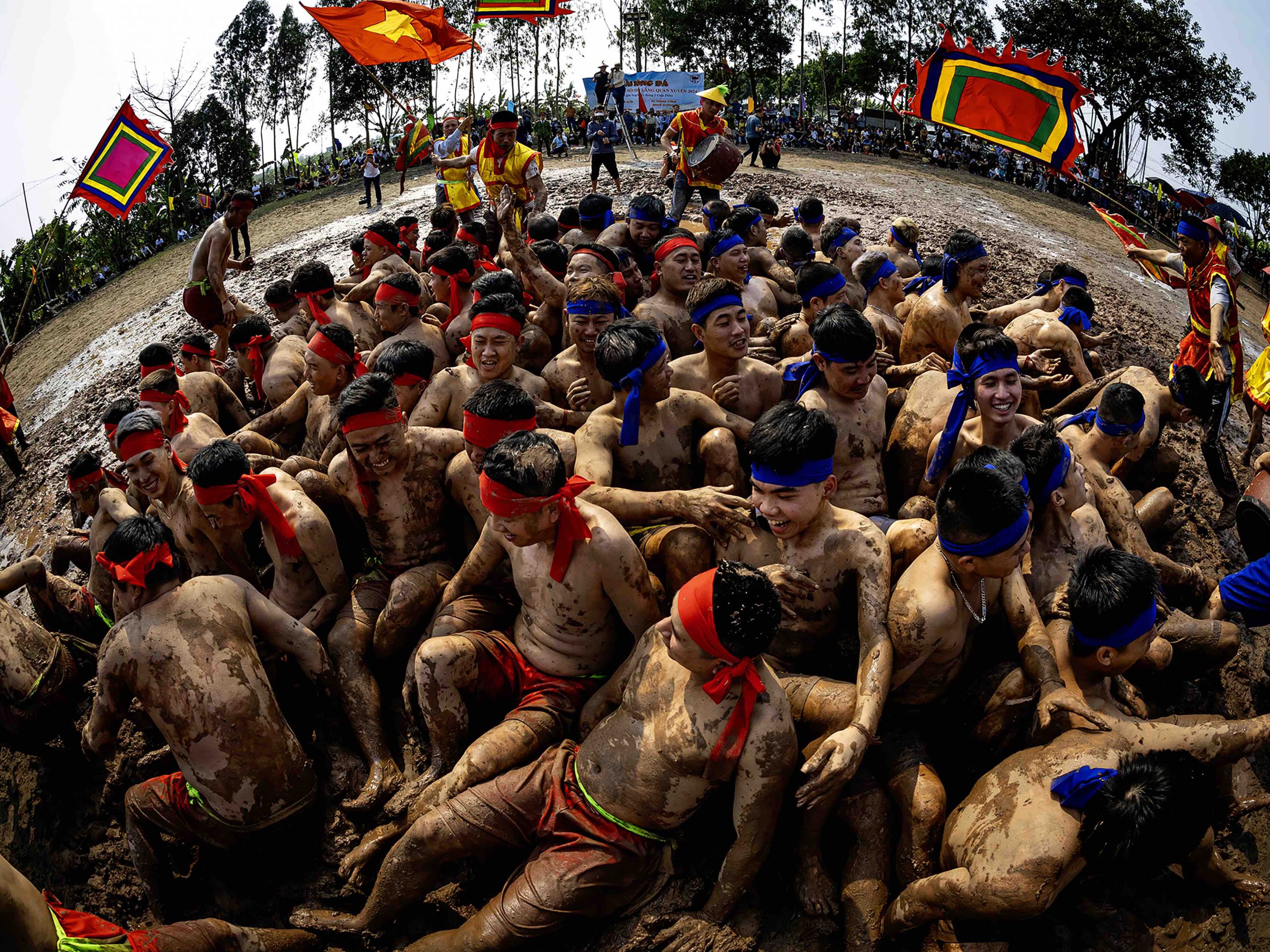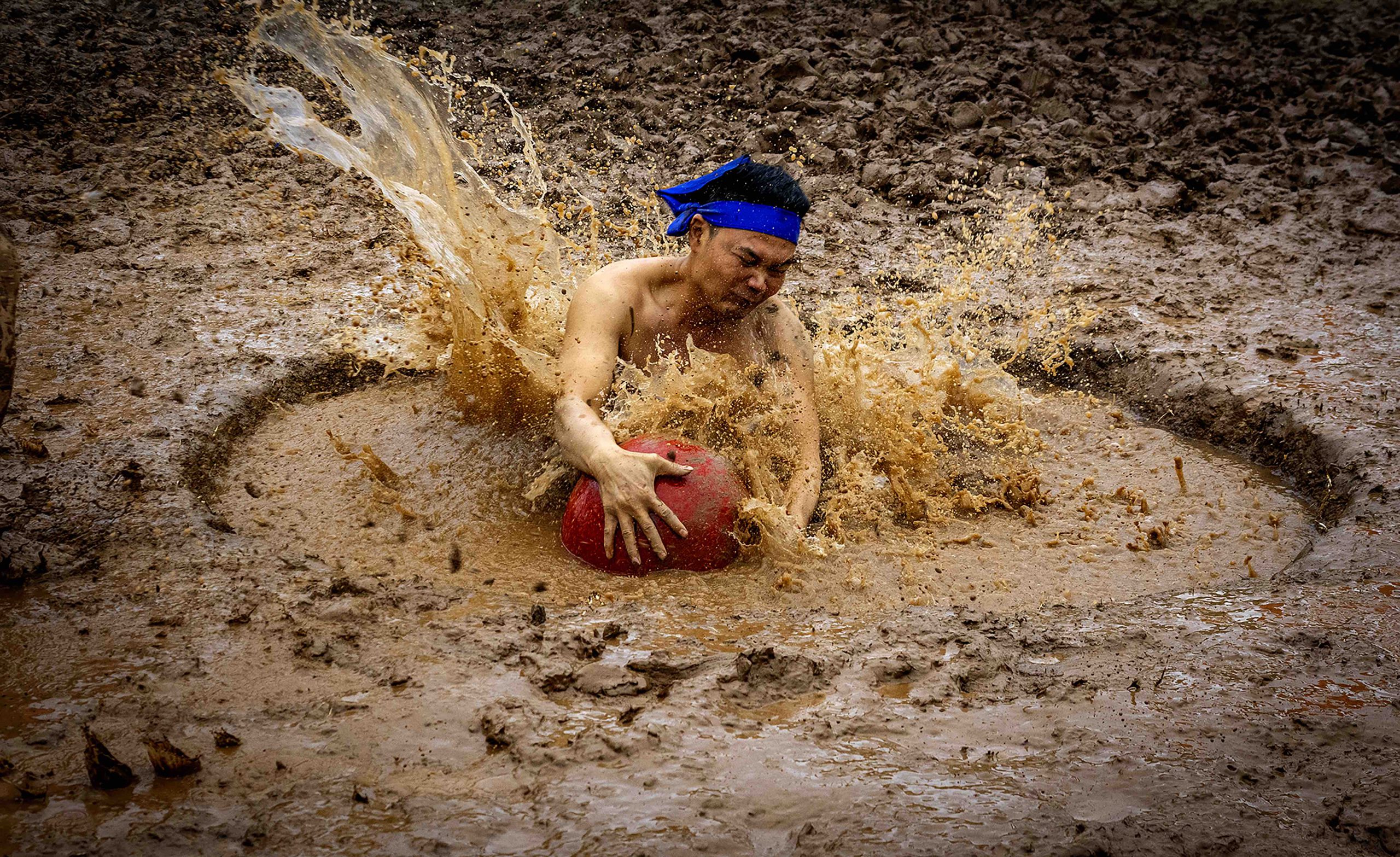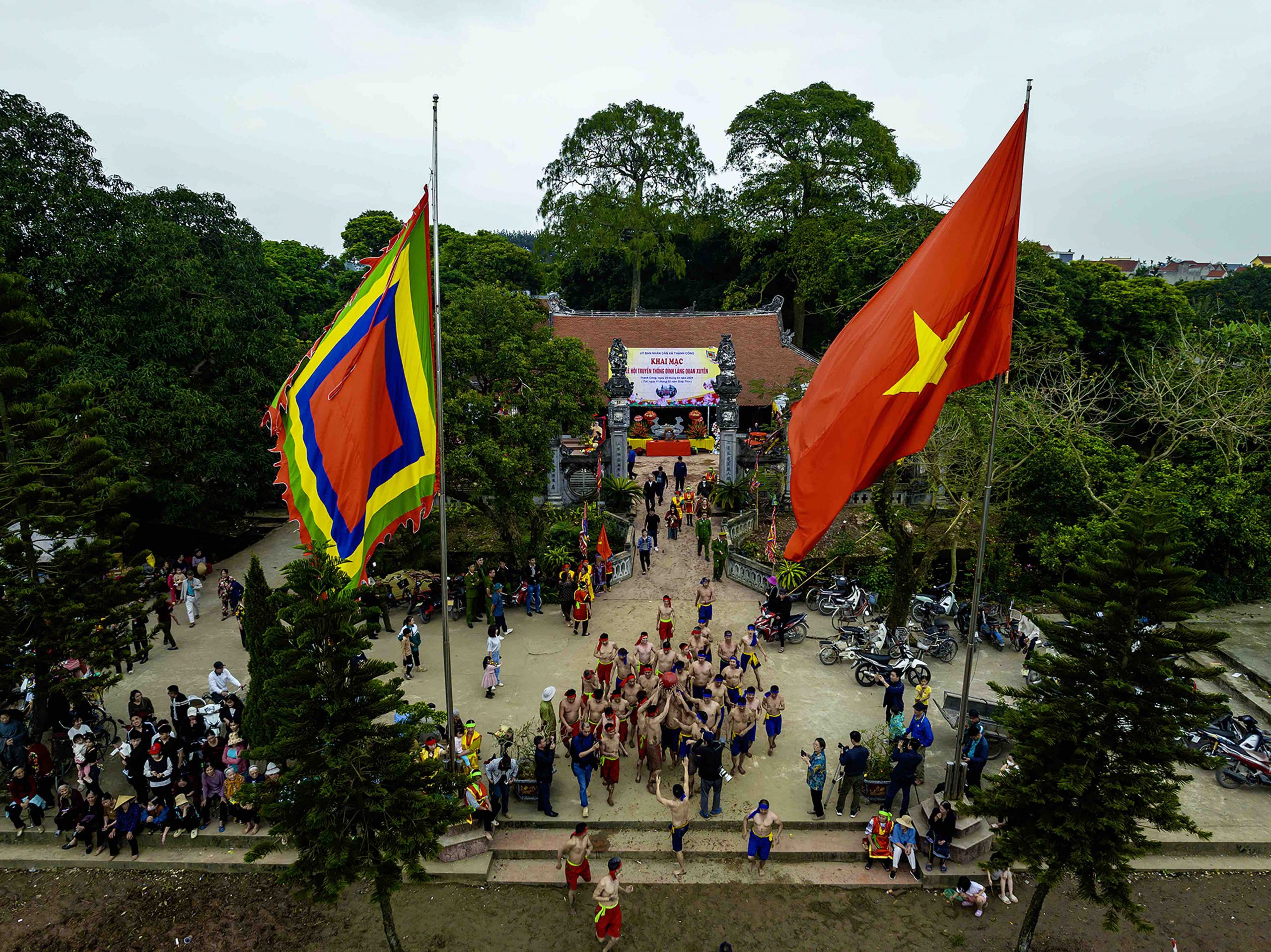Le Huy
The Red River Delta is well-known for its traditional festivals, especially those associated with folk beliefs. Through these festivals, the locals express their hopes for a prosperous and peaceful new year. In the past, the Quan Xuyen Festival took place annually in Thang Cong commune, Khoai Chau district, Hung Yen province, held from the 9th to the 16th day of the second lunar month. However, since 1938 the festival has been organized once every three years in Dragon, Dog, Ox, and Goat years, as decreed by Mr. Cao Van Linh, a local official in Hung Yen.

To this day, the festival retains many cultural values unique to the countryside around the Red River, such as rituals of carrying the royal tablet, fetching water for prayers, and wrestling matches.
According to local lore, the village’s tutelary god Vu Quang Chieu started these wrestling games to mimic the floating river life of his sworn brother Pham Cong Nghi. The wrestling event involves 72 participants divided into two teams of 36, dressed in red or blue. One team represents the Upper Village while the other represents the Lower Village. The teams are led by three captains elected by the villagers: one serves as the overall commander and two others as flag bearers, each leading one team.
Currently, Quan Xuyen village preserves two wrestling balls. The original ball has a diameter of 40 cm and weighs over ten kilograms. Faded by time, it has been used since Mr. Vu Quang Chieu taught the villagers this game during long-ago village festivals. Due to the original ball’s great size and weight, villagers crafted a “new” ball, which is also over 100 years old. Made of jackfruit wood with a diameter of 30cm, this ball weighs about 7kg and is painted red.

The wrestling arena is chosen from a plot of land in front of the village’s communal house. Each year when preparing for the festival, villagers cease cultivating this chosen plot, which measures 65 meters long and 45 meters wide. The flat surface consists of three wrestling pits: one main pit and two smaller pits. Twice as large as each smaller pit, the main pit is dug in the center of the arena with a depth of 1.2 meters and a diameter of 1.5 meters. The two smaller pits are located at both ends of the arena with a depth of 0.6 meters and a diameter of 0.8 meters. The distance from the main pit to each smaller pit is 30 meters.
At the start of the game, each team selects its strongest, fastest, and most skillful player to compete for possession of the ball. The flag bearer signals with a clapper to indicate that the match has begun. Two wrestlers sprint toward the main pit, relying on their strength and agility to seize the ball and return it to their team.

While transporting the ball from the main pit to their side, wrestlers must cradle it in their arms. All other wrestlers can only use their legs, backs, or hips to help move the ball forward. Players push against the ground to create leverage through their backs or hips to gradually shift their bodies while pushing the ball toward their team’s area. A team secures victory by successfully placing the ball into their designated pit.
Due to the arena’s layout, without headbands to identify each player, spectators would struggle to distinguish between team members as they all become muddy during the game. It is believed that victory brings the entire village good luck for the coming year, while defeat leads to misfortune. For this reason, today, teams often aim for a draw.
While the wrestling event at Quan Xuyen’s traditional festival embodies the spirit of competition, it remains friendly rather than fierce, receiving enthusiastic support from both villagers and visitors. This game not only showcases the locals’ martial spirit but also serves as a symbolic representation of folk beliefs within an agricultural society, emphasizing unity and cooperation among team members and the entire community.










